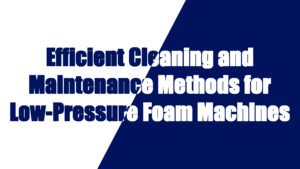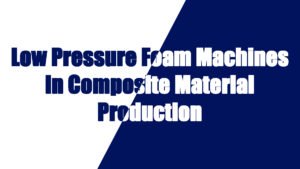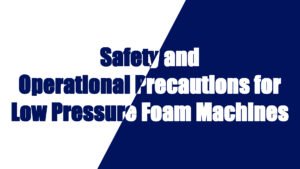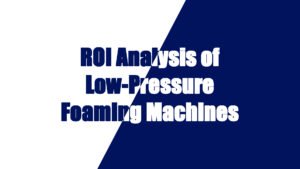In the mining industry, materials need to withstand harsh conditions, including high abrasion, chemical exposure, extreme temperatures, and heavy loads. Polyurethane (PU) is commonly used in mining applications due to its durability, wear resistance, and versatility. However, it is important to compare it with other materials commonly used in the mining industry, such as rubber, steel, polyethylene (PE), and composite materials, to understand their respective advantages and disadvantages.
Materials Comparison Table:
| Property | Polyurethane (PU) | Rubber | Steel | Polyethylene (PE) | Composite Materials |
|---|---|---|---|---|---|
| Density (g/cm³) | 1.1 – 1.3 | 1.1 – 1.4 | 7.8 – 8.1 | 0.91 – 0.96 | 1.3 – 2.0 |
| Tensile Strength (MPa) | 40 – 50 | 10 – 25 | 250 – 1000 | 25 – 50 | 100 – 200 |
| Elongation at Break (%) | 500 – 800% | 300 – 500% | 10 – 25% | 300 – 800% | 5 – 10% |
| Hardness (Shore A) | 60 – 95 | 30 – 90 | N/A | 60 – 80 | N/A |
| Abrasion Resistance | Excellent | Good to excellent (depending on type) | Low (unless coated) | Moderate | Excellent |
| Impact Resistance | High, excellent rebound | Moderate to high | Very low (can dent or crack) | Low | High |
| Chemical Resistance | Excellent, resistant to oils, acids, solvents | Poor to good (depends on type) | Excellent, resistant to most chemicals | Good, resistant to many chemicals | Excellent (depends on resin) |
| Temperature Resistance | -40°C to 80°C | -40°C to 100°C | 300°C+ | -50°C to 80°C | -40°C to 150°C |
| Flexibility | High, excellent for shaping and molding | High, flexible, can deform under pressure | Rigid and inflexible | Moderate to high | Moderate to high |
| Fatigue Resistance | Excellent | Moderate to high | Poor | Moderate | High |
| Cost | Moderate to high | Low to moderate | High | Low to moderate | Moderate to high |
| Wear Resistance | Excellent | Moderate to high | Very low (unless treated) | Moderate | Excellent |
| Applications in Mining | Linings, screens, hoses, belts, wear-resistant parts | Conveyor belts, seals, gaskets, protective wear | Equipment parts, structural components | Chutes, hoppers, liners, piping | High-stress applications, wear parts, liners, reinforcement |
Detailed Analysis:
1. Polyurethane (PU):
- Advantages:
- Abrasion Resistance: Polyurethane offers excellent abrasion resistance, making it ideal for high-wear applications like liners, screen meshes, Dan conveyor belts in mining operations.
- Impact Resistance: PU has high rebound properties, which help absorb impact forces in environments where machinery is subject to heavy loads or shocks, such as crushers and mills.
- Chemical Resistance: Polyurethane resists oils, acids, and solvents, which makes it suitable for environments where harsh chemicals are present (e.g., in flotation processes or ore extraction).
- Durability and Fatigue Resistance: PU performs excellently in high-stress and repetitive wear environments, providing longer service life compared to other materials like rubber or steel.
- Disadvantages:
- Temperature Resistance: Polyurethane can withstand temperatures up to 80°C, which is lower than materials like steel or composite materials. This can limit its application in high-temperature environments.
- Cost: PU is generally more expensive than rubber and polyethylene, which may limit its use in some cost-sensitive applications.
2. Rubber:
- Advantages:
- Flexibility and Impact Resistance: Rubber has high flexibility and can absorb shocks and impacts, making it suitable for conveyor belts, gaskets, Dan seals in mining machinery.
- Good Abrasion Resistance: Rubber, particularly vulcanized rubber, can offer excellent wear resistance in low-to-medium wear environments.
- Low Cost: Rubber is relatively inexpensive, making it a cost-effective solution for many applications.
- Disadvantages:
- Chemical Resistance: Rubber’s chemical resistance is generally lower than that of PU and composite materials. It may degrade when exposed to certain oils, acids, and solvents.
- Lower Durability: Rubber is less durable than polyurethane or composite materials in high-wear environments.
- Temperature Resistance: Rubber is suitable for environments with moderate temperatures, but it starts to degrade at higher temperatures (typically >100°C), limiting its application in high-heat mining processes.
3. Steel:
- Advantages:
- High Strength and Durability: Steel is incredibly strong and durable, withstanding extreme loads and stress, making it ideal for structural components, heavy equipment, and parts that are exposed to significant mechanical forces (e.g., excavators, crushers).
- Chemical Resistance: Steel is resistant to most chemicals, and when properly coated (e.g., galvanized steel), it can be highly corrosion-resistant, making it suitable for harsh mining environments.
- High Temperature Resistance: Steel can handle very high temperatures (up to 300°C and beyond), making it the material of choice for high-heat applications.
- Disadvantages:
- Low Abrasion Resistance: Without coatings, steel can wear down more quickly in high-abrasion environments. It is prone to denting and cracking under impact.
- Rigidity: Steel is rigid and not as flexible as rubber or polyurethane, which can be a limitation in applications that require some degree of flexibility (e.g., conveyor systems, sealing systems).
4. Polyethylene (PE):
- Advantages:
- Cost-Effective: Polyethylene is very affordable, which makes it suitable for large-scale applications like liners, piping, Dan chutes in the mining industry.
- Chemical Resistance: PE has good resistance to many chemicals, including acids and alkalis, making it ideal for certain mining processes.
- Low Friction: Polyethylene has a very low coefficient of friction, making it ideal for applications where materials need to slide or move easily, such as chutes Dan conveyors.
- Disadvantages:
- Wear Resistance: Polyethylene has moderate wear resistance compared to materials like polyurethane and steel, so it may not last as long in high-wear applications.
- Temperature Resistance: PE is only suitable for low-to-medium temperatures (up to 80°C), which limits its use in high-temperature mining environments.
5. Composite Materials:
- Advantages:
- Wear Resistance: Composite materials (e.g., carbon fiber, fiberglass-reinforced plastics) have excellent wear resistance, which is ideal for high-stress applications in the mining industry like liners, wear plates, Dan screening systems.
- Impact Resistance: Composites often have high impact resistance, making them ideal for environments with significant mechanical shock or vibration.
- Temperature Resistance: Composites can handle higher temperatures (up to 150°C or more) compared to polyurethane and polyethylene, making them suitable for extreme mining conditions.
- Disadvantages:
- Cost: Composite materials are typically more expensive than other materials like rubber and polyethylene, which can make them less suitable for low-cost, mass-produced applications.
- Structural Integrity: While composites are strong and durable, they may not have the same tensile strength or flexibility as steel in heavy load-bearing applications.
Summary:
Polyurethane (PU)
- Pros: Excellent abrasion resistance, impact resistance, and fatigue resistance. Ideal for high-wear applications like liners, conveyor belts, Dan wear-resistant parts in mining. High chemical resistance makes it ideal for contact with mining solvents and oils.
- Cons: Cost is higher than materials like rubber and polyethylene. Temperature resistance is limited compared to steel and composites.
Rubber
- Pros: Cost-effective, flexible, and provides good impact resistance. Often used in conveyor belts, gaskets, Dan seals.
- Cons: Lower abrasion resistance Dan chemical resistance compared to polyurethane. Temperature resistance is lower, making it less suitable for extreme conditions.
Steel
- Pros: Extremely strong Dan durable. Suitable for structural components and high-load applications. Excellent temperature resistance Dan chemical resistance.
- Cons: Poor abrasion resistance unless treated with coatings. Rigid and not flexible for dynamic applications.
Polyethylene (PE)
- Pros: Low cost, good chemical resistance, Dan low friction. Suitable for applications like piping Dan chutes.
- Cons: Moderate wear resistance Dan temperature resistance, which limits its use in high-abrasion or high-heat environments.
Composite Materials
- Pros: Excellent wear resistance, impact resistance, Dan temperature resistance. Ideal for heavy-duty applications in mining.
- Cons: Expensive, and may not match steel in terms of load-bearing capacity.
Conclusion:
- Polyurethane stands out in the mining industry for wear-resistant applications where flexibility, impact resistance, and chemical resistance are essential, such as conveyor belts, liners, Dan screens. It provides a cost-effective alternative to more expensive materials like composite materials while offering better performance than rubber or polyethylene in high-wear environments.
- Rubber is best suited for applications requiring flexibility Dan impact absorption, but it lacks the long-term durability of polyurethane or steel in heavy-duty mining conditions.
- Steel is essential for structural components Dan high-load applications but is less suited for environments where wear resistance or flexibility is critical.
- Polyethylene offers a cost-effective solution for many mining applications but falls short in wear and temperature resistance compared to PU and steel.
- Composite materials provide high performance in wear and impact resistance but come at a higher cost, which may be a limiting factor in certain mining operations.
Polyurethane provides a versatile and durable solution for a wide range of mining applications, particularly in abrasion resistance Dan wear-prone environments, making it a preferred choice for mining industry components like liners, belts, Dan wear plates.



































